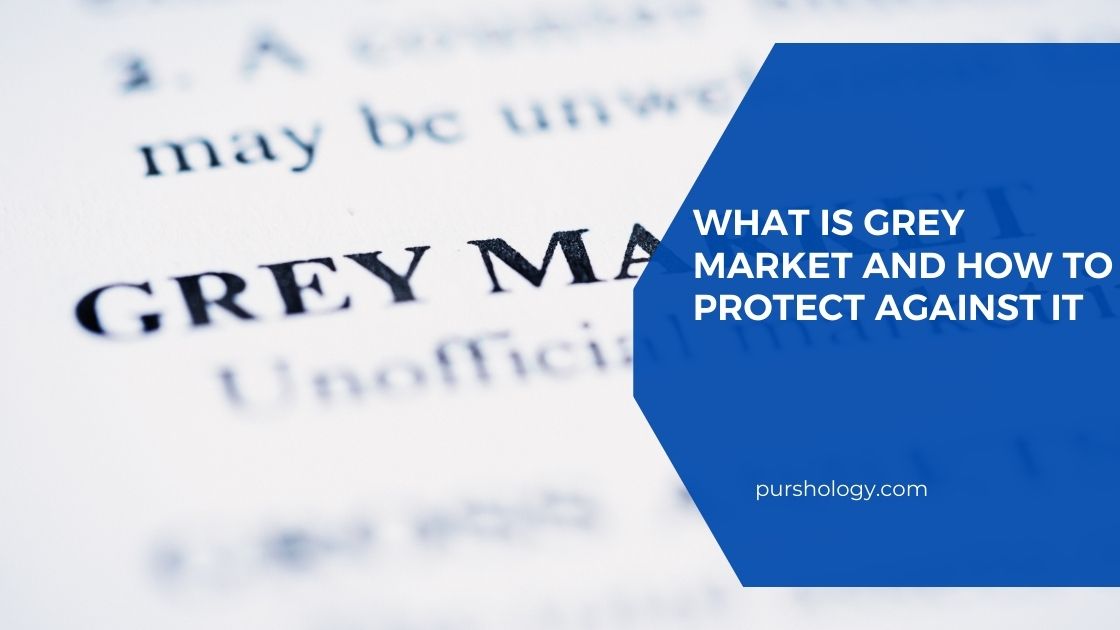In an ideal world, you would have control of every distribution channel and be able to know who your sellers are. We don’t live in a ideal world, that’s right. The grey market is sometimes mixed in with your approved sales channels. Online brand protection is a very hot topic these days. There are plenty of solutions for brands that are plagued by grey market sellers, even if they don’t have a firm understanding of what the grey market is and where it exists. To get started, you just need to know what to look for. In this blog, we will explain what is grey market and how to protect against it.
What Is Grey Market
The grey market is the distribution channel that is not authorized by the brand or manufacturer. Unauthorized sellers of grey market goods can look legitimate to consumers. If you could get out of your car and drive up to the market, there would be a grey market. The grey market includes any retailer who sells a legitimate product yet acquires it by unauthorized means. This could be a rogue distributor, a distributor selling off excess inventory to another distributor, or something else. With these ways, you can protect against the grey market.
Identified Unauthorized Seller
The grey market can’t be stopped if you don’t know what you’re talking about. Your sales data can give you a good idea of what’s happening here. A suspiciously low price is one of the good indicators of a grey market seller. If you see any red flags, monitor your prices across all of your distribution channels. If you find a seller whose prices are lower than usual, drill down into them. They could have made your products part of the grey market by acquiring them by unauthorized means.
Minimum advertised price or MAP monitoring is a tool that can be used here. Whether you have worked with them or not, monitoring your MAP pricing can show any seller who is priced too low. Better insight into the grey market can be provided by both MAP violators and unauthorized sellers. To protect their brands, companies need to have IP protection in place.
Educate Your Consumers
Good consumer education is next. It won’t solve all your grey market problems, but it is definitely a tool you should use.Give your consumers information about where to shop and why to shop there. The average shopper doesn’t know or care about unauthorized sellers, MAP pricing, or the grey market, so you don’t have to be explicit about the reasoning behind this.
You should work it into your existing marketing and sales. Mention where your products are sold, as well as links to authorized websites, in order to emphasize your retail partners. It should be easy for consumers to purchase your brand. The chances that they end up with a grey market seller increase if they don’t.
Send Cease And Desist Letters
Once you have tracked down the retailers who are selling your grey market products, you can shift focus towards stopping unauthorized sellers. There is a cease-and-desist letter that you can use. This notice can be used to inform the seller that you are willing to take legal action if necessary. The grey market seller may not be aware that they are part of the grey market. A cease-and-desist letter is all you need to correct this behavior. If not, it can help you plan for the future.
Take Them To Court
Finally, we arrive at the litigation stage. For some grey market sellers, the only way to protect their brand is through a lawsuit. If you’re looking for a legal firm that has experience with unauthorized sellers, trademark concerns, or MAP pricing, you’ve come to the right place. There is plenty of experience out there because many brands have been in these same shoes. If you are ready for a lawsuit, the previous steps can help you prepare. Records from your authorized distribution channels, MAP violations, unauthorized sellers, and more will help you build your case.
When it comes to your brand, where and how your products are sold is very important Online brand protection becomes much more important. A good protection strategy from grey market goods, counterfeit goods, stolen goods, or any other unauthorized sale of your products begins with education and awareness. If you don’t know what’s happening in the market and how your brand is presented to the public, you won’t be successful. In order to protect their brands, companies need to have IP protection in place. For more blogs, keep visiting our website.







